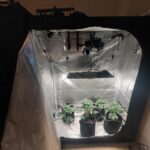Welcome to iGrow VA!
At iGrow VA, we are committed to empowering our community with the finest cannabis products and cultivation expertise. Our mission is to provide unparalleled quality in genetics, including premium seeds and clones, while delivering comprehensive information on cultivating cannabis and maximizing yields. We aim to be the go-to source for all cannabis-related needs, offering a wide range of products and reliable information to support and enhance your growing journey. Through dedication to excellence and a passion for the cannabis industry, iGrow VA strives to foster a thriving and informed community of growers and enthusiasts.

Meet TJ, your Cannabis Liaison!
“From my youth, my passion for cannabis has taken me on an extraordinary journey. I’ve ventured from Weed Mountain in the Emerald Triangle to secret basement hideaways in NYC, cultivating these plants for over 20 years. My commitment to quality over quantity is unwavering. When you experience the exceptional products I offer, you’ll understand why they say love tastes better.”

